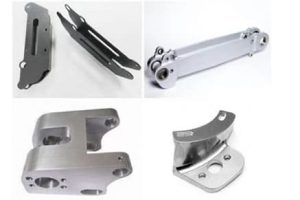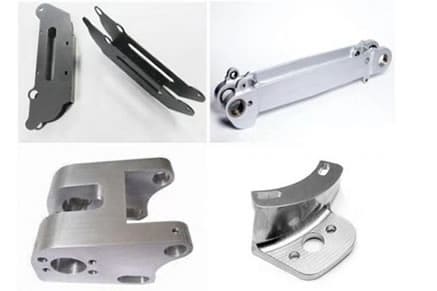What is Aluminum?
Aluminium is one of those elements which has extensive use in our daily lives. The cans, foils, utensils like woks, knives, forks, and spoons we use, all are made of aluminum. But the point to ponder, is aluminum magnetic? Well, this question hides a lot of interesting facts about aluminum and not just its magnetic properties. Thus, this article will reveal the magnetic characteristics of aluminum. But before that, it highlights some basic understanding of aluminum, its properties and lastly its applications. It also provides a its comparison with other magnetic materials. This information will help in selecting aluminum for magnetic or nonmagnetic application in any given project.
Understanding Aluminum
Aluminium is an element widespread in earth’s crust. It covers almost 8% of the earth’s core mass and is the 3rd most abundant element in the world following oxygen and silicon. The common minerals of aluminum that are found in ores are cryolite and bauxite. Because of its abundance, it is cheap to use and now has many applications in engineering.

It lies at 13 positions in the periodic table. It has a white silver appearance. Aluminum has a dull metal look because of a layer of oxidation at its surface. This layer is due to the exposure of aluminum to air which readily oxidizes when meets it.
Aluminium is lighter in weight than steel. It has good ductility and malleability thus it can bend to any shape without being broken or fractured. Being metal, it is a good conductor of electricity and so is used in many electrical applications. Electrical wiring is the common one among them because electricity can be transformed with negligible resistance. Aluminum has good corrosion resistance as well because of its oxidation layer. That is why it is used in making cutlery and utensils.

Is Aluminum Magnetic?
No, pure aluminum is not magnetic. It cannot create its magnetic field neither be attracted to magnets under normal conditions. But aluminum alloys can be made magnetic depending on their combination like nickel and iron are magnetic.
The magnetism of aluminum depends on its valance electrons. It has 3 unpaired electrons in its outermost shell. These electrons exist in the s and p orbital of aluminum atom. The presence of unpaired electrons in orbital turns any metal into paramagnetic. Paramagnetic materials are those which have slight attraction only in the presence of magnetic field. But they are still nonferromagnetic which are magnetic materials. If the valence electrons are paired, they are termed as diamagnetic. When a magnet brings close to it aluminum, it slightly attracts the magnetic field but becomes non magnetized as soon as the magnetic field is removed. This phenomenon in aluminum is normally observed at low temperatures.
Do Magnets Stick to Aluminum
No, magnets do not stick to aluminum. Aluminum is a paramagnetic material. It has a weak attraction towards magnetic fields. The existence of an uneven number of electrons in its atomic structure results in this magnetic behavior. It is important for the electrons to be aligned with each other when a magnetic field is nearby. But in aluminum, they are randomly organized. This alignment of electrons is termed magnetic domains or dipoles, which has an attraction between its positive and negative ions. Dipoles are magnetized poles with opposite charges separated at a very small distance. in paramagnetic material (like aluminum), this feature is absent. Ferromagnetic materials have magnetic domains aligned straightly in the presence of magnetic field. This causes the material to be magnetized or stick to magnets.
Why is Aluminum not Magnetic?
Aluminum is not magnetic because it is paramagnetic. For a magnetic metal, the metal must be attracted towards the magnetic field. This phenomenon is absent in aluminum. It has unpaired electrons in its atomic structure which contributes to its paramagnetic properties. Paramagnetic materials are different than ferromagnetic (magnetic) materials. The paired electrons spin in the opposite way and cancel their dipole moment. In paramagnetic materials, the electrons have their spinning which is not canceled out by net dipole moment. The more the unpaired electrons, greater will be their attraction towards magnetic fields, as in case of ferromagnetic materials. Aluminum consists of only 1 unpaired electron and that causes a very weak magnetic attraction. Furthermore, it does not sustain this magnetism when the magnetic field is removed. This property in any material is measured by magnetic susceptibility. It is the ability of material to support the external magnetic fields. Aluminium has 2.2B.M magnetic susceptibility. Magnetic susceptibility greater than zero or positive means that material has some response to magnetic field. However, 2.2 is still a very low magnetic susceptibility to being a magnetic material. That is the reason aluminum is not magnetic rather than termed as paramagnetic.
Aluminum vs Magnetic Materials
Magnetic materials are of three types. Diamagnetic, paramagnetic, and ferromagnetic materials.
Diamagnetic materials are those which have paired electrons in their shell. These electrons are spinning in opposite directions. This opposition cancels the net dipole moment and refutes he magnetic capabilities of a material. When an external magnetic field is applied, these materials repel the field. The dipoles aligned in the opposite direction to the magnetic field and negated the magnetism. Therefore, they do not attach or stick to magnets. Interesting fact is all the materials show diamagnetic material. but the degree to which these are diamagnetic is a different subject. Like iron, being a strong magnetic field, it also shows diamagnetism at very negligible level. Other diamagnetic materials are gold, mercury, and the most common water.
Ferromagnetic materials have unpaired electrons on their valance shell. These electrons contribute a huge share in magnetism because no other electron is present to refute this property. The magnetic dipoles of these magnetic materials are aligned with each other in the presence of magnetic field. These are also known as magnetic domains which are in order of 1012 – 1015. These magnetic materials have the most prominent behavior in the presence of magnet. They are the strongest attraction towards magnets. This magnetism remains in the material even if the magnet is removed unlike the paramagnetic materials. Most popular ferromagnetic materials are iron, nickel and cobalt.
Comparison of Aluminum’s magnetic properties with ferromagnetic and diamagnetic materials
Aluminum (Paramagnetic)
Ferromagnetic materials
Diamagnetic materials
Few unpaired electrons
More unpaired electron
Paired electrons
Weakly magnetic
Strongly magnetic
nonmagneticnonmagnetic
Slightly attracted to the magnet
Strongly attracted towards the magnetic field
Repel magnetic field
Weak dipole moment
Strong dipole moment
Net or zero dipole moment
Electrons are neither aligned nor spinning in the opposite direction
Electrons aligned in the same direction
Electron spinning in the opposite direction
cURL Too many subrequests.
cURL Too many subrequests.
cURL Too many subrequests.
cURL Too many subrequests.
cURL Too many subrequests.
cURL Too many subrequests.
cURL Too many subrequests.
Aluminium cURL Too many subrequests.
cURL Too many subrequests.
cURL Too many subrequests.
cURL Too many subrequests.
cURL Too many subrequests.
cURL Too many subrequests.
cURL Too many subrequests. cURL Too many subrequests.
Produkte
Beschreibung
cURL Too many subrequests.
Aluminium cURL Too many subrequests.
cURL Too many subrequests.
cURL Too many subrequests.
cURL Too many subrequests.
cURL Too many subrequests.
cURL Too many subrequests.
cURL Too many subrequests.
cURL Too many subrequests.
cURL Too many subrequests.
cURL Too many subrequests.
cURL Too many subrequests.
cURL Too many subrequests.
cURL Too many subrequests.
cURL Too many subrequests.
cURL Too many subrequests.
cURL Too many subrequests.
Fazit
cURL Too many subrequests.
cURL Too many subrequests.
cURL Too many subrequests.
cURL Too many subrequests. Aluminium. cURL Too many subrequests.
cURL Too many subrequests.
cURL Too many subrequests.
cURL Too many subrequests. cURL Too many subrequests.
cURL Too many subrequests.
Cast aluminum is not magnetic. The casting process is carried out in the absence of magnetic field. as aluminum is also nonmagnetic. Therefore, in normal cases, cast aluminum is not magnetic.
is galvanized aluminum magnetic?
The galvanized aluminum is not magnetic. Galvanization involves zinc coating over the aluminum. zinc is paramagnetic just like the aluminum. Therefore, they both do not contribute anything to magnetic properties of galvanized aluminum. It can be said that galvanized aluminum is paramagnetic.





